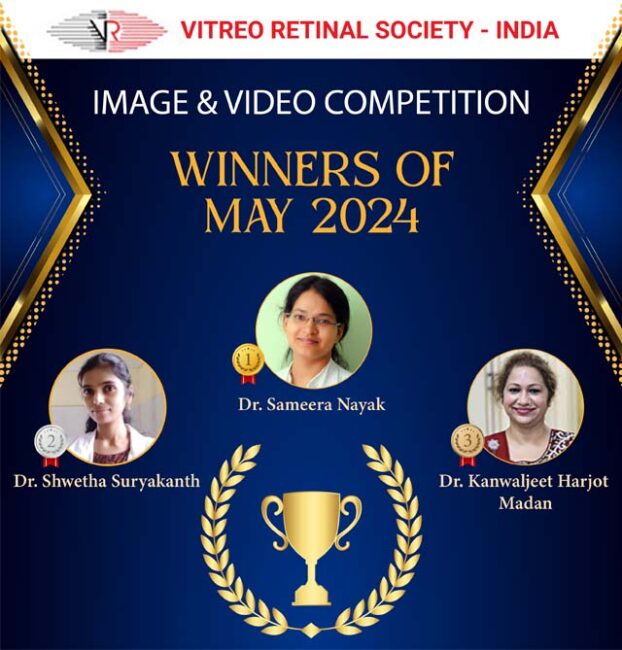QUICK LINKS

Dr. Sameera Nayak
Title:Perfection in Imperfection
Description: A 40-year-old man with a year-long vision decline presented a central yellowish-orange lesion in both eyes, exhibiting 20/25, N6; corrected visual acuity. Retinal autofluorescence imaging revealed heart-shaped hyperfluorescent lesions on the macula (A and B). Diagnostic tests(optical coherence tomography, optical coherence tomography angiography, electrooculogram, electroretinogram) confirmed adult-onset foveomacular vitelliform dystrophy (AOFVD). Genetic analysis identified a homozygous mutation in BEST1 gene exon 4, replacing arginine with serine. BEST1 mutations cause bestrophinopathies, leading to lipofuscin deposits between photoreceptors and retinal pigment epithelium, evident in hyperfluorescence. Despite significant macular involvement, individuals with these mutations usually maintain good vision.

Dr. Shwetha Suryakanth
Title: A stitch in time saves nine!
Description: These are serial fundus images of a 60 year old gentleman who presented with sudden, painless diminution of vision in the right eye since 2 hours. Fundus examination revealed a classical picture of Central retinal artery occlusion (CRAO) with cherry red spot at fovea, retinal pallor in the posterior pole of retina and cattle tracking of vessels. An emergency AC tap was done and the perfusion immediately improved. The first image shows fundus appearance at presentation and the second image shows reperfusion. The unaided vision in this patient improved drastically from HM+ to 6/12.
CRAO is an Ophthalmic emergency. Sometimes there is a visible embolus/ Hollenhorst plaque. If the patient presents immediately and an attempt is made to dislodge the embolus, reperfusion ensues and vision can be restored. Like in this case, immediate AC tap restored the patient’s vision. So that is the right stitch in time that saved the patient from blindness.

Dr. Kanwaljeet Harjot Madan
Title: Bright Moon always has a Dark Side
Description: Retinal Astrocytic Hamartomas (RAH) (also called Retinal Astrocytoma) are benign glial cell tumors. They are often encountered as an asymptomatic lesion in screening of patients with Tuberous Sclerosis Complex but may be Sporadic.
Diagnosis is largely clinical and may be supported by ancillary tests. Growth or complications of retinal astrocytomas requiring treatment are rare. Macular or Optic Nerve Tumors or those complicated by haemorrhage or exudation, may cause visual disturbance (blurring, floaters or metamorphopsia) and require treatment.
Most RAH are small and non-progressive and periodic monitoring is typically all that is required. RAH usually remain stable throughout life. Progressive growth and local complications are uncommon.

